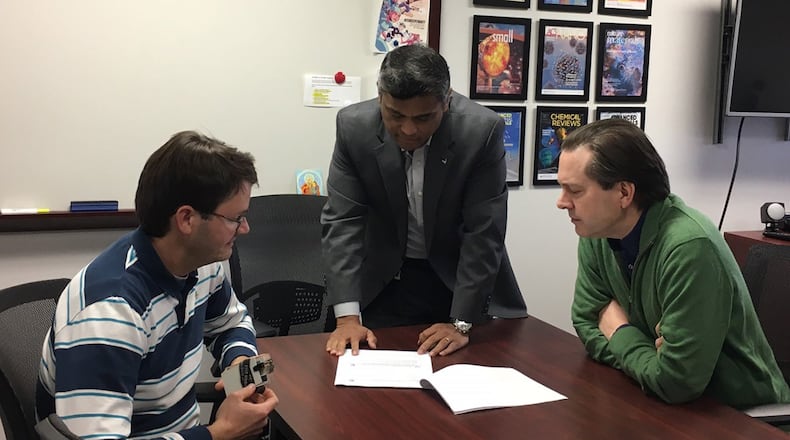Most biological materials store and function best when they are kept in water that is neither too acid nor too alkaline, that is, near to pH neutral. Over time, however, this required water environment actually hastens the decay of the material. Without refrigeration, the decay process is fast. The “half-life” of an unrefrigerated vaccine, for example, is about two days.
The problem boils down to water. Significantly increasing the shelf-life of biological materials means getting the water out of their production and storage.
“The process of removing water is very similar to how freeze-dried coffee is made,” said Research Biologist Patrick Dennis. “Once the water is removed, the protein is highly concentrated and remains a liquid. No additional solvent is needed.”
The research team has not yet worked with vaccines, however. The work that led to the patent was done with antibodies. An antibody is a protein produced when an agent such as a virus is recognized by the immune system. The antibody combines chemically with the virus to destroy it. One treatment currently under study involves using antibodies from patients who have recovered from COVID-19 as a treatment for others who become infected.
However, Dennis cautions against too much enthusiasm at this point in seeing this as part of the war on COVID-19.
“The work planned is for lab-level studies, not clinical,” said Dennis.
Further research has been transitioned to the Defense Health Program to test the application of this technology to stabilizing vaccines. AFRL has also engaged with the Bill and Melinda Gates Foundation to search for enabling technologies that can be used to reduce cold chain logistics in austere environments.
“We are very excited to begin the studies into how this technology can be used to increase the shelf-life of vaccines so they can be more easily transported to stricken areas,” said Dennis. “As I write this, I am sheltering-in-place and telecommuting to work, so every day is a constant reminder of how impactful vaccine stabilization could be to our economy, culture and society as a whole.”
About the Author
